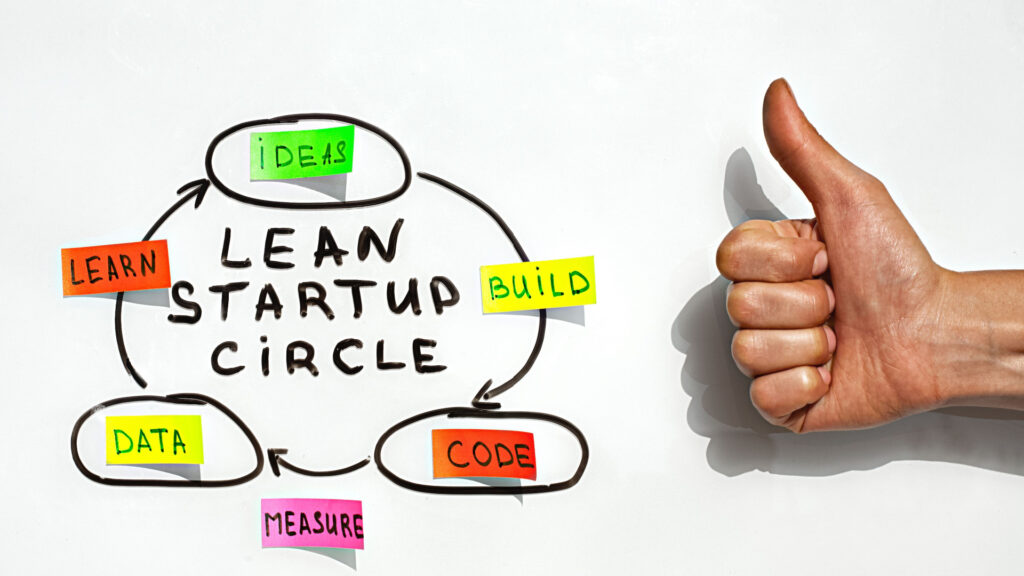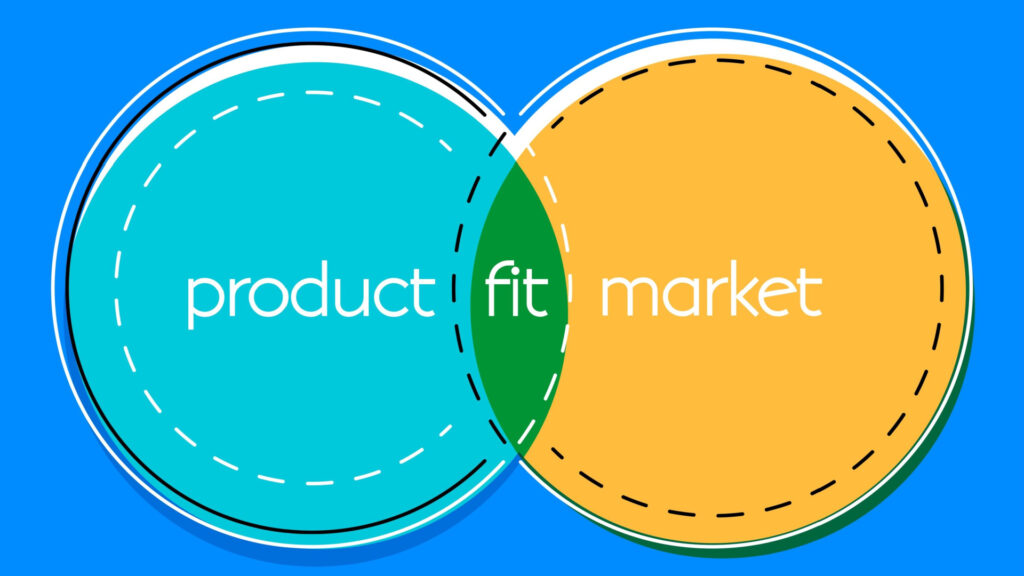
Understanding Product Market Fit
Product market fit (PMF) is a crucial concept in the world of startups and entrepreneurship. It refers to the alignment between a product’s features and the market demand for those features. When a product achieves a strong product market fit, it satisfies a real need and resonates with its target market. However, finding and measuring product market fit can be challenging. In this article, we will explore different methods, with a primary focus on the lean startup method and its comparison with other approaches.
The Importance of Product Market Fit
Product market fit is vital for the success of a startup. Without it, even the most innovative ideas and well-designed products can fail. Achieving product market fit ensures that there is a market demand for the product, leading to sustainable growth and customer satisfaction. It allows startups to understand customer preferences, improve their products, and tailor their marketing efforts effectively. Therefore, determining and measuring product market fit is a critical step for any startup.
Key Components of Product Market Fit
Product market fit depends on several key factors. Firstly, understanding the target audience is vital. Startups must identify their ideal customers and their needs. This requires extensive research, including market analysis, competitor analysis, and customer surveys. Secondly, developing a product that fulfills these identified needs is essential. The product features, user experience, and value proposition should align with what the target market desires. Lastly, gaining customer validation is a significant component of product market fit. Positive feedback, repeat purchases, and customer testimonials indicate that the product is resonating with the market.
When it comes to understanding product market fit, it is essential to delve deeper into the concept and explore its various dimensions. One aspect to consider is the importance of timing. Timing plays a crucial role in achieving product market fit. A product may have all the right features and fulfill a market need, but if it is introduced too early or too late, it may not gain traction. Startups must carefully analyze the market trends, customer behavior, and competitive landscape to determine the optimal timing for their product launch.
Another factor to consider is the scalability of the product. While achieving product market fit is a significant milestone, it is equally important to ensure that the product can scale to meet the growing demand. Startups need to have a clear plan in place to handle increased production, distribution, and customer support as the product gains popularity. Scalability is crucial to sustain growth and capitalize on the market opportunity.
Furthermore, maintaining product market fit is an ongoing process. The market is dynamic, and customer preferences can change over time. Startups must continuously monitor the market, gather feedback, and adapt their products accordingly. This iterative approach allows them to stay ahead of the competition and retain their position in the market.
When it comes to measuring product market fit, there are various methods and metrics that startups can utilize. One popular approach is the Net Promoter Score (NPS), which measures customer loyalty and satisfaction. By asking customers how likely they are to recommend the product to others, startups can gauge the level of product market fit. Additionally, tracking metrics such as customer acquisition cost, customer lifetime value, and churn rate can provide valuable insights into the product’s performance and its fit within the market.
In conclusion, product market fit is a critical concept that startups must strive to achieve. It ensures that the product aligns with market demand, leading to sustainable growth and customer satisfaction. Understanding the target audience, developing a product that fulfills their needs, and gaining customer validation are key components of product market fit. Additionally, considering factors such as timing, scalability, and continuous adaptation is crucial for long-term success. By measuring product market fit using various methods and metrics, startups can make informed decisions and drive their businesses towards success.
The Lean Startup Method

The lean startup method, introduced by Eric Ries, provides a comprehensive framework for building successful startups and achieving product market fit efficiently. This methodology emphasizes iterative development, rapid experimentation, and continuous improvement. Let’s explore the principles of the lean startup method and how it helps in measuring product market fit.
Principles of the Lean Startup Method
The lean startup method is based on the following principles:
- Build-Measure-Learn Cycle: Startups should develop minimum viable products (MVPs) quickly, measure their performance, collect feedback, and learn from the results.
- Validated Learning: Learning from real customer feedback and data is crucial to the success of a startup. Relying on assumptions and conjectures can lead to wasted resources.
- Fail Fast: Encouraging a culture where failures are viewed as learning opportunities allows startups to identify and correct mistakes early on.
- Pivot or Persevere: Startups should make data-driven decisions and be willing to change course if the current strategy is not yielding the desired results.
The build-measure-learn cycle is at the core of the lean startup method. It emphasizes the importance of developing minimum viable products (MVPs) quickly and getting them into the hands of customers as soon as possible. By doing so, startups can gather real-world feedback and data that can inform their decision-making process. This iterative approach allows for continuous improvement and helps in identifying and addressing any flaws or shortcomings in the product or service being offered.
Validated learning is another key principle of the lean startup method. It emphasizes the importance of basing decisions on real customer feedback and data rather than relying on assumptions or guesswork. By collecting and analyzing data, startups can gain valuable insights into customer behavior, preferences, and needs. This data-driven approach enables startups to make informed decisions and allocate resources effectively, reducing the risk of wasted time and effort.
The fail fast principle encourages startups to view failures as learning opportunities rather than setbacks. By embracing failure and learning from it, startups can identify and correct mistakes early on, avoiding potentially costly errors in the long run. This mindset shift fosters a culture of experimentation and innovation, where taking risks is seen as an essential part of the learning process.
Pivot or persevere is a principle that highlights the importance of being flexible and adaptable in the face of changing circumstances. Startups should be willing to change course if the current strategy is not yielding the desired results. By continuously evaluating and analyzing data, startups can identify when it’s necessary to pivot, which means making a significant change in the product, market, or strategy. This ability to pivot allows startups to stay responsive to customer needs and market trends, increasing their chances of success.
Measuring Product Market Fit with the Lean Startup Method
Using the lean startup method, measuring product market fit involves conducting experiments, gathering data, and analyzing the results. Startups can employ various techniques such as A/B testing, cohort analysis, and user interviews to understand customer behavior and preferences. By measuring key metrics like customer acquisition cost, retention rate, and user satisfaction, startups can assess their product market fit and make data-driven decisions to iterate and improve their offerings.
A/B testing is a technique commonly used by startups to compare two versions of a product or feature and determine which one performs better. By randomly dividing users into two groups and exposing each group to a different version, startups can gather data on user behavior and preferences. This data can then be analyzed to determine which version is more effective in achieving the desired outcomes, such as increased engagement or conversion rates.
Cohort analysis is another valuable technique for measuring product market fit. It involves grouping users based on specific characteristics or behaviors and analyzing their behavior over time. By tracking key metrics for each cohort, startups can gain insights into how different groups of users interact with their product or service. This analysis can help identify patterns, trends, and areas for improvement, ultimately leading to a better understanding of the target market and its needs.
User interviews are an essential part of measuring product market fit. By directly engaging with customers and gathering their feedback, startups can gain valuable insights into their needs, pain points, and preferences. User interviews can provide qualitative data that complements quantitative data collected through other methods. This qualitative data can help uncover underlying motivations, emotions, and barriers that influence customer behavior, allowing startups to tailor their offerings to better meet customer needs.
Key metrics such as customer acquisition cost, retention rate, and user satisfaction are crucial for assessing product market fit. Customer acquisition cost measures the cost of acquiring a new customer and is an important indicator of the efficiency of a startup’s marketing and sales efforts. Retention rate measures the percentage of customers who continue to use a product or service over time and is a strong indicator of customer satisfaction and loyalty. User satisfaction, often measured through surveys or feedback ratings, provides insights into how well a product or service meets customer expectations and needs.
By regularly measuring and analyzing these key metrics, startups can gauge their product market fit and make data-driven decisions to iterate and improve their offerings. This iterative approach allows startups to continuously adapt and evolve, increasing their chances of success in a competitive market.
Other Methods for Finding and Measuring Product Market Fit

While the lean startup method has gained significant popularity, there are other approaches to finding and measuring product market fit. Let’s explore a few alternative methods:
Traditional Market Research
Traditional market research involves surveys, focus groups, and other data collection methods to gather insights about target markets. This approach helps in understanding consumer behavior, preferences, and market trends. Market researchers often employ statistical analysis techniques to identify patterns and make informed decisions. By conducting extensive market research, startups can gain a comprehensive understanding of their target audience and their needs.
For example, a company developing a new fitness app might conduct surveys to gather data on people’s exercise habits, preferences, and motivations. This information can then be used to tailor the app’s features and marketing messages to better resonate with potential users.
However, it’s important to note that traditional market research may not be as agile and iterative as the lean startup method. It can be time-consuming and costly, requiring a significant investment of resources. Additionally, market research provides a snapshot of the market at a specific point in time and may not capture the dynamic nature of product market fit.
Customer Development Model
The customer development model, developed by Steve Blank, focuses on customer discovery and validation. It involves engaging with potential customers, creating hypotheses, and testing them through iterative experiments. This approach helps startups gain a deeper understanding of their target market and their product-market fit.
Customer development often involves direct interaction with customers, such as conducting interviews or observing their behavior. By actively involving customers in the product development process, startups can gather valuable feedback and insights that can inform product iterations and improvements.
For instance, a software startup might engage in customer development by conducting user interviews to understand pain points and gather feedback on early prototypes. This iterative process allows the startup to refine their product and align it more closely with customer needs.
However, it’s worth noting that the customer development model may require more resources and time compared to the lean startup method. It involves a high level of customer engagement and may require multiple iterations and experiments to achieve product market fit.
Net Promoter Score (NPS)
Net Promoter Score is a metric that measures customer loyalty and satisfaction. It gauges the likelihood of customers recommending a product or service to others. By conducting NPS surveys and analyzing the results, startups can gain insights into customer sentiment and their product market fit.
NPS surveys typically ask customers to rate their likelihood of recommending the product or service on a scale from 0 to 10. Based on their responses, customers are classified into three categories: promoters (score 9-10), passives (score 7-8), and detractors (score 0-6). The NPS score is calculated by subtracting the percentage of detractors from the percentage of promoters.
For example, a startup in the e-commerce industry might use NPS surveys to assess customer satisfaction and identify areas for improvement. By analyzing the responses and identifying trends, the startup can make data-driven decisions to enhance their product and strengthen their product market fit.
However, it’s important to note that NPS should not be solely relied upon for measuring product market fit. While it provides insights into customer sentiment, it may not capture the full complexity of product-market fit. NPS should be used in conjunction with other methods to gain a comprehensive understanding of the market and customer needs.
Comparing the Lean Startup Method with Other Methods

When it comes to finding and measuring product market fit, there are various methods available, each with its own set of strengths and weaknesses. Let’s take a closer look at these methods:
Strengths and Weaknesses of Each Method
The lean startup method is widely recognized for its efficiency, agility, and data-driven decision-making. This approach allows startups to quickly iterate their products, measure market response, and make necessary adjustments based on real-time data. By constantly experimenting and learning from customer feedback, startups using the lean startup method can make informed decisions that lead to product-market fit. However, it’s worth noting that this method may not provide as comprehensive and in-depth market research as traditional methods.
On the other hand, traditional market research methods offer detailed insights into consumer behavior and preferences. Through surveys, focus groups, and other research techniques, businesses can gather valuable data that helps them understand their target market better. This approach is particularly useful when trying to identify customer needs and preferences. However, traditional market research can be slower and less adaptable compared to the lean startup method. It may take longer to collect and analyze data, which could delay the product development process.
Another method worth considering is the customer development model. This approach emphasizes customer engagement and interaction throughout the product development process. By actively involving customers in the decision-making process, businesses can gain valuable insights and build products that truly meet customer needs. However, it’s important to note that the customer development model may require greater time and effort compared to other methods. Building strong relationships with customers and continuously seeking their input can be a time-consuming process.
Net Promoter Score (NPS) is yet another method that can provide valuable insights into customer satisfaction and loyalty. By measuring the likelihood of customers recommending a product or service, businesses can gauge customer sentiment and identify areas for improvement. However, NPS alone may not provide a complete picture of product-market fit. It should be combined with other metrics and data points to gain a comprehensive understanding of customer satisfaction and overall market response.
Choosing the Right Method for Your Business
When it comes to selecting the most suitable method for your business, several factors need to be considered. The nature of your product or service, your target market, available resources, and timeline all play a role in determining the best approach. Startups and businesses should carefully evaluate their unique circumstances and goals before making a decision.
In many cases, a combination of methods may be necessary to gain a comprehensive understanding of product-market fit. By leveraging the strengths of different approaches and adapting them to their specific needs, businesses can increase their chances of success. It’s important to remain flexible and open-minded throughout the process, continuously learning and adjusting strategies based on market feedback.
Ultimately, the goal is to find a method or combination of methods that align with your business goals and capabilities. By investing time and effort into understanding your target market and their needs, you can increase the likelihood of achieving product-market fit and building a successful business.
Implementing Your Chosen Method

Once a startup has decided on a method, the next step is to implement it effectively. This is a critical phase in the journey of any startup, as it involves putting the chosen method into action and bringing the startup’s vision to life. Let’s explore the steps involved in implementing both the lean startup method and other methods in more detail:
Steps to Implement the Lean Startup Method
The lean startup method, popularized by Eric Ries, is a systematic approach to building and growing startups. It emphasizes rapid iteration, customer feedback, and data-driven decision making. The steps involved in implementing the lean startup method are as follows:
- Define the problem and identify the target market: This step involves clearly understanding the problem that the startup aims to solve and identifying the specific market segment that the product or service will cater to. By defining the problem and target market, the startup can align its efforts and resources towards addressing a real need in the market.
- Develop a minimum viable product (MVP): In the lean startup methodology, an MVP refers to a basic version of the product that allows the startup to test its assumptions and gather feedback from real customers. This step involves building a simple, functional version of the product that can be used to validate the startup’s hypotheses and gather valuable insights.
- Test the MVP with real customers and gather feedback: Once the MVP is ready, it is essential to put it in the hands of real customers and gather their feedback. This step involves conducting user tests, interviews, surveys, or any other method to collect feedback and understand how customers perceive the product. The feedback gathered during this stage is crucial in shaping the future direction of the startup.
- Measure key metrics and assess product-market fit: To evaluate the success of the MVP and its alignment with the target market, it is important to measure key metrics and assess product-market fit. This step involves analyzing data related to user engagement, conversion rates, customer satisfaction, and other relevant metrics to determine if the product is meeting the needs of the target market.
- Iterate and improve the product based on the data collected: Based on the insights gained from customer feedback and data analysis, the startup should iterate and improve the product. This involves making necessary adjustments, adding new features, or even pivoting the product strategy to better align with customer needs and preferences.
- Repeat the cycle to continuously refine the offering and achieve better product-market fit: The lean startup method is an iterative process that requires continuous learning and refinement. By repeating the cycle of building, measuring, and learning, startups can gradually refine their offering and achieve better product-market fit. This ongoing process of iteration and improvement is crucial for the long-term success and growth of the startup.
Steps to Implement Other Methods
While the lean startup method is widely adopted, there are various other methods and frameworks that startups can choose to implement, depending on their specific needs and goals. The steps involved in implementing these methods may vary based on the approach chosen, but there are some common steps that can be followed:
- Conducting thorough market research or customer discovery: Before implementing any method, it is essential to have a deep understanding of the market and the target customers. This step involves conducting market research, analyzing industry trends, and gathering insights about customer needs, preferences, and pain points. By gaining a comprehensive understanding of the market, startups can make informed decisions and tailor their strategies accordingly.
- Defining hypotheses and testing them with target customers: Once the market research is done, startups can define hypotheses or assumptions about their product, target market, or business model. This step involves formulating clear hypotheses and designing experiments to test them. By involving target customers in the testing process, startups can validate their assumptions and gather valuable feedback to refine their strategies.
- Analyzing the results and adjusting strategies accordingly: After conducting experiments and gathering data, startups need to analyze the results and draw meaningful insights. This step involves carefully analyzing the data collected during the testing phase and using it to make informed decisions. By understanding the strengths and weaknesses of their strategies, startups can adjust their approaches and make necessary changes to improve their chances of success.
- Iterating and refining the product based on the findings: Based on the insights gained from the testing phase, startups should iterate and refine their product or service. This step involves incorporating customer feedback, making necessary improvements, and enhancing the overall user experience. By continuously iterating and refining the product, startups can ensure that it remains relevant and competitive in the market.
- Continuously monitoring the market and customer feedback to maintain product-market fit: Implementing any method requires a constant focus on the market and customer feedback. This step involves continuously monitoring market trends, staying updated with customer needs and preferences, and adapting the product or strategy accordingly. By staying agile and responsive to market changes, startups can maintain product-market fit and increase their chances of long-term success.
Measuring and Adjusting Your Product Market Fit

Product market fit is not a one-time achievement. It requires continuous monitoring and adjustments to ensure that the product remains relevant and valuable to the target market. Startups should regularly evaluate their product market fit and make necessary changes based on customer feedback and changing market dynamics.
When to Re-evaluate Your Product Market Fit
Startups should consider re-evaluating their product market fit in the following situations:
- Changes in customer needs and preferences.
- Entry of new competitors or disruptive technologies.
- Significant shifts in market dynamics or trends.
- Negative feedback or declining customer satisfaction metrics.
Adjusting Your Strategy Based on Feedback
Listening to customer feedback and adapting the product strategy is crucial for maintaining product market fit. Startups should actively communicate with their customers, analyze their feedback, and make necessary adjustments to the product, pricing, marketing, or distribution strategies. By staying responsive and flexible, startups can ensure that their products align with market needs and remain competitive.
In conclusion, finding and measuring product market fit is a critical task for startups. The lean startup method offers a structured approach to achieve this goal, while other methods like traditional market research, customer development model, and NPS provide additional insights. By carefully choosing and implementing the most suitable method, startups can improve their chances of success and create products that truly resonate with their target market.